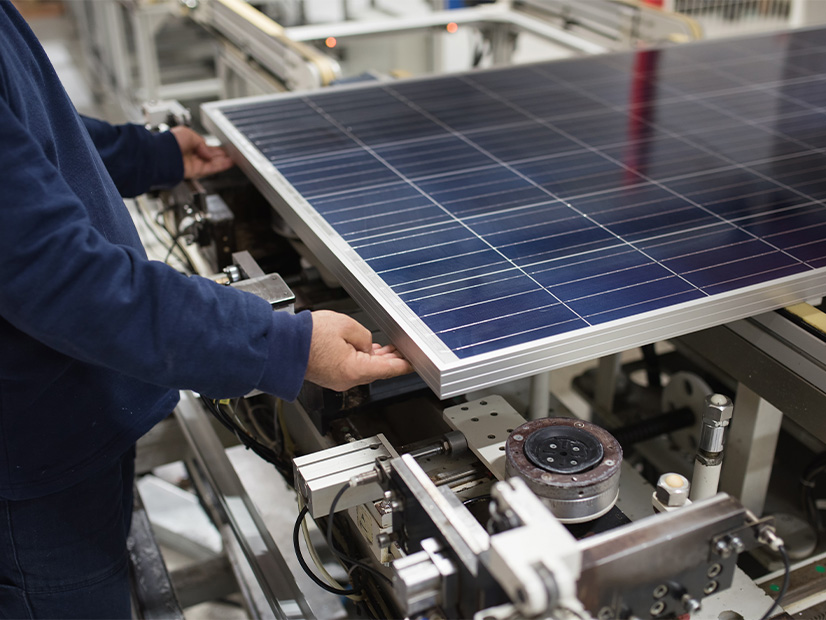Starting in 2024, consumers buying an electric vehicle that qualifies for a $7,500 tax credit under the Inflation Reduction Act.
Starting in 2024, consumers buying an electric vehicle that qualifies for a $7,500 tax credit under the Inflation Reduction Act (IRA) will be able to transfer that credit directly to the dealer selling them the EV.
“This will effectively lower the vehicle purchase price by providing customers with an upside-down payment on their vehicle at the point of sale that equals the value of the credit instead of having to wait to claim that credit on their tax return next year,” said Lily Batchelder, assistant secretary for tax policy at the U.S. Department of the Treasury.
Speaking during a Thursday press call, Batchelder said the Internal Revenue Service will launch an online portal in January that will allow dealers “to submit clean vehicle sales information to the IRS and promptly receive payments for the transfer credits.”
Batchelder and Deputy Secretary of the Treasury Wally Adeyemo were on the call to preview what the Treasury Department is calling Phase 2 of its implementation of the IRA’s clean energy tax credits and the specific guidance that the agency will release this fall.
During the past year, since passage of the IRA, Treasury’s focus was “on the core elements needed to accelerate the significant economic and climate benefits of the law,” Adeyemo said. In addition, “Treasury prioritized guidance on all the bonus provisions to ensure companies and other entities planning projects were able to pencil out new projects and secure financing across a wide range of technologies,” he said.
The focus in Phase 2 will be “boosting America’s manufacturing to create good-paying jobs and strengthening our security, to remove choke points that will hurt our ability to lower costs and meet our economic and climate goals,” he said.
Taking a victory lap for the billions in private investment the law has unleashed, Adeyemo noted that “companies have announced more than 200 new projects, totaling more than $110 billion in investment in building America’s clean energy economy.”
A Treasury Department analysis released last month found that “investments [in] electric vehicles and batteries are concentrated in communities with lower wages, lower college graduation rates and lower employment rates. The law is working as intended,” he said.
Clarity on Content
But the past year also has been a bumpy one for Treasury and the IRS as they rolled out successive guidelines for the IRA’s many tax credits. The law’s domestic content provisions — for EVs and other clean energy equipment — have been an ongoing flashpoint.
Sen. Joe Manchin (D-W.Va.), a key architect of the IRA, has been a constant critic, arguing that Treasury has not followed the letter of the law on domestic content, which was intended to boost the domestic supply chain for EVs and EV batteries, but instead has benefited foreign automakers. (See IRA’s EV Tax Credits Spark Senate Debate.)
The solar industry also has said qualifying solar panels for the domestic content credits has been more complicated than expected. “Without full clarity on qualifications and processes, developers, manufacturers and financiers are often left in limbo,” said Michelle Davis, head of global solar for industry analyst Wood Mackenzie, in a third-quarter market report released Thursday,
“As a result, the full benefits of the IRA, in the form of more development of solar projects that meet various policy objectives, won’t manifest until developers, asset owners and financiers have enough regulatory clarity to make confident investments,” Davis said.
Batchelder acknowledged more work is ahead on the domestic content provisions, as part of the agency’s work on all the clean energy tax credits expanded or created by the IRA.
Treasury’s priorities for guidance to be released in the coming months include:
-
- The Section 45X advanced manufacturing tax credits aimed at incentivizing production of clean energy equipment, from solar panels and wind turbine blades to inverters and batteries, to be issued by the end of the year.
- New energy efficient home credits, which will incentivize home builders to use the most up-to-date efficiency standards in their new construction.
- Tax credits for clean hydrogen and sustainable aviation fuel, with initial guidance coming again by the end of the year.
The Bottom Line
A key question ahead for Treasury and the Biden administration is just how much the IRA tax credits will cost. Although originally estimated at $370 billion, a recent update from the Congressional Budget Office added about $180 billion to the law’s bottom line, according to a New York Times report.
Batchelder noted Treasury set aside at least $1.6 billion for 48C tax credits for clean energy projects in “energy communities” with closed coal plants but, so far, the Department of Energy has received concept papers from potential applicants seeking a total of $11 billion in tax credits.
Responding to a reporter’s question, a Treasury official said while the IRA was a historic investment in clean energy, China continues to invest about five times as much into its energy system, and the entrepreneurs and businesses getting money from the IRA are putting their dollars into the U.S. economy.




